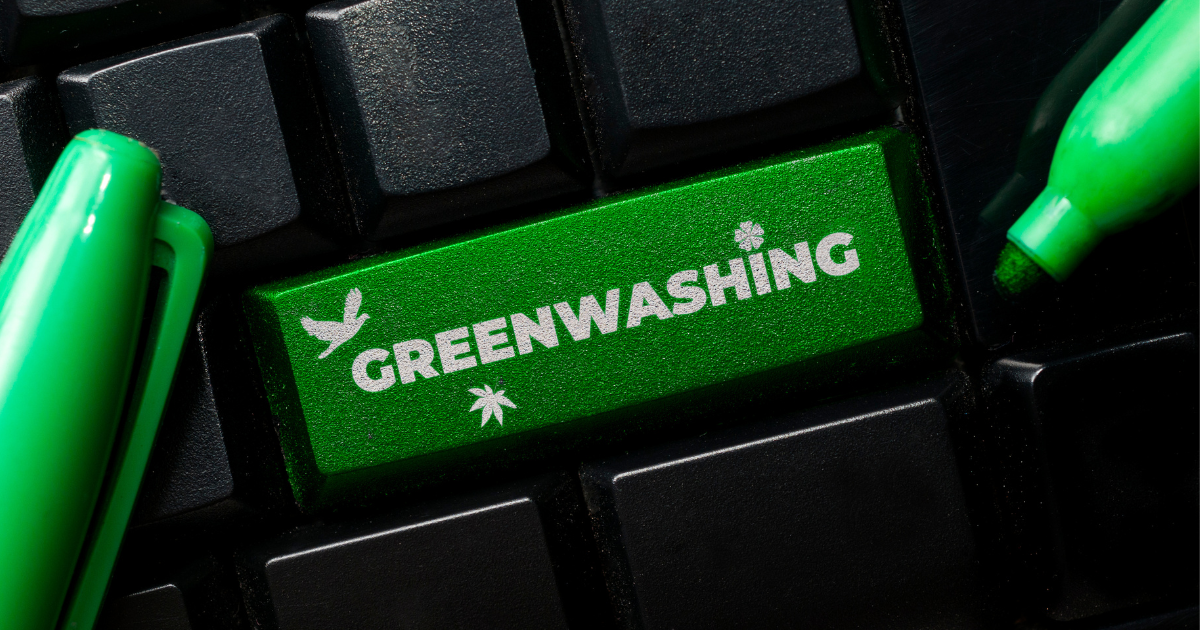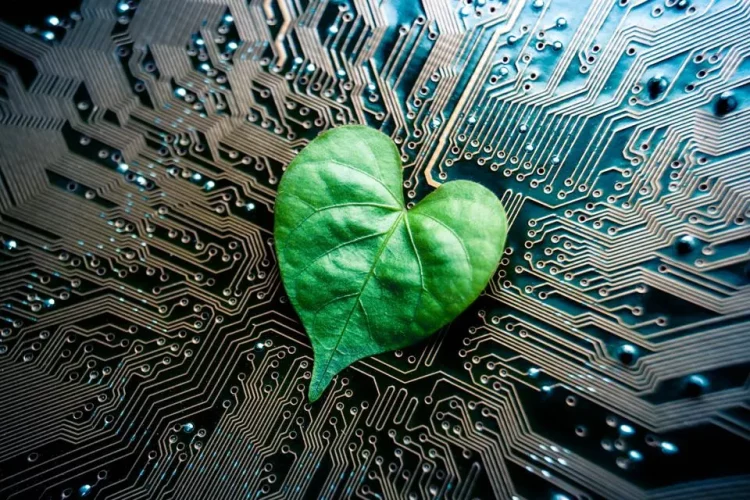In an era of increasing environmental awareness, tech companies have been quick to embrace the language of sustainability. From eco-friendly packaging to carbon-neutral production processes, brands seem to be doing their part in addressing climate change. However, there’s a darker side to this “green” trend: greenwashing.
What is Greenwashing?
Greenwashing refers to the practice of companies misleading consumers about the environmental benefits of their products or practices. Rather than genuinely contributing to sustainability, these companies prioritize public relations and marketing strategies that paint a green image, often without backing up their claims with real, tangible actions. In the fast-paced world of technology, where consumer expectations shift quickly and environmental consciousness rises, greenwashing is becoming increasingly pervasive.
But are your favorite tech brands truly eco-friendly, or are they simply riding the wave of sustainability for profit? Let’s dive into how greenwashing might be hiding behind the shiny surfaces of the tech industry.
The Allure of the Green Tech Trend
Tech companies like Apple, Google, and Microsoft have successfully positioned themselves as pioneers of sustainability. They boast of energy-efficient data centers, carbon neutrality, and recyclable packaging. They promise that their products are designed with the planet in mind, and many consumers are more than willing to take these claims at face value. But does this commitment to the environment hold up under scrutiny?
Apple’s ‘Green’ Image: A Closer Look
Apple has long been one of the tech industry’s leaders in promoting sustainability. The company frequently highlights its efforts to reduce carbon emissions, improve recycling, and use recycled materials in its products. In 2020, Apple announced that it was officially carbon neutral, a bold claim that generated headlines and positive press.

However, a closer look at Apple’s supply chain and product lifecycle reveals cracks in the company’s green armor. While Apple has made significant strides in reducing emissions from its own operations, the vast majority of the environmental impact comes from its supply chain, which includes mining rare minerals for components and manufacturing processes that rely heavily on fossil fuels. Many of these suppliers are located in countries with lax environmental regulations, contributing to pollution and environmental degradation.
Moreover, Apple’s aggressive product release cycles—where newer models are introduced every year—encourage a culture of obsolescence. Consumers are encouraged to upgrade frequently, even if their devices are still functional. This leads to more waste and exacerbates the environmental impact of production.
Google’s Greenwashing?
Google, known for its search engine, cloud services, and Android OS, has also made bold claims about sustainability. The company asserts that it operates entirely on renewable energy and is committed to achieving net-zero carbon emissions across its entire supply chain. But similar to Apple, Google’s efforts are often superficial and don’t fully address the scale of its environmental footprint.
While Google’s data centers may be powered by renewable energy, the company’s hardware products—such as the Pixel phone and the Google Home speaker—are not as environmentally friendly as one might think. Google has yet to produce a fully recyclable product or one that is made entirely from renewable materials. Much like Apple, Google’s product release strategy fosters waste, with older models becoming obsolete long before they are fully used.
Additionally, much of Google’s “green” energy is purchased from external providers, which means that it’s more about securing public relations victories than creating real, widespread change.
Microsoft’s Sustainability Goals: Progress or Greenwashing?
Microsoft, like its competitors, claims to be a leader in sustainability. It announced its ambition to be carbon negative by 2030 and has made moves to decarbonize its operations by investing in renewable energy and technology designed to reduce environmental impact.
However, there are significant concerns surrounding the company’s carbon footprint. As with other tech giants, Microsoft’s supply chain is a major contributor to its overall emissions. Despite investing in green technologies, the company’s reliance on physical hardware like data centers, servers, and the constant demand for energy to power these facilities puts a significant strain on natural resources.
Microsoft has also faced criticism for not being fully transparent about its supply chain and for underplaying the environmental costs of its expansive hardware ecosystem.
The Dark Side of Sustainability: A Marketing Strategy?
While tech giants tout their green initiatives, the truth is that many are primarily motivated by profit rather than sustainability. Greenwashing has become a tool that allows companies to tap into the growing market for eco-conscious consumers without making any meaningful changes to their operations.
Why is this happening?
- Consumer Demand: Today’s consumers are more environmentally aware than ever before. Studies show that people are willing to pay a premium for products that are marketed as sustainable. Tech brands are capitalizing on this shift, using green imagery to enhance their reputation and boost sales.
- Regulatory Pressure: Governments around the world are enacting stricter environmental regulations, especially in relation to carbon emissions and waste disposal. By adopting green initiatives, companies can appear to be ahead of the curve, even if their actions aren’t fully in line with regulatory requirements.
- Public Relations: Being seen as an environmentally responsible brand can significantly boost a company’s reputation. Greenwashing provides a quick and easy way to improve public perception without the need for costly long-term investments in sustainability.
Recognizing Greenwashing in the Tech Industry
How can consumers tell if a brand is genuinely committed to sustainability or just trying to cash in on the green trend? Here are some key red flags to look out for:

- Vague Claims: Phrases like “eco-friendly,” “green,” or “sustainable” can be meaningless without clear explanations or supporting data. If a company claims its product is “carbon neutral,” ask how they achieved that status and whether they are offsetting emissions through credible initiatives.
- Lack of Transparency: Does the company provide information about its supply chain, manufacturing processes, and product lifecycle? If they’re not sharing this information, it could be a sign that they are trying to hide unsustainable practices.
- Unverifiable Certifications: Many companies use environmental certifications to enhance their green image. However, some certifications may be self-issued or awarded by organizations with low standards. Always check for third-party certifications from reputable sources.
- Short Product Lifecycles: The tech industry’s focus on constant product upgrades contributes significantly to e-waste. If a company promotes new models frequently without offering clear recycling or trade-in programs, it could be a sign that they prioritize profit over environmental sustainability.
The Way Forward: True Sustainability in Tech
While greenwashing is prevalent in the tech industry, there are a growing number of companies that are genuinely committed to sustainability. True environmental responsibility requires a holistic approach that takes into account the entire lifecycle of a product, from materials sourcing to end-of-life disposal.
Here are a few practices that can help tech companies reduce their environmental impact:
- Recyclable Materials: Using sustainable materials like recycled plastics, metals, and renewable resources can drastically reduce the environmental footprint of products.
- Longer Product Lifespan: By designing products to last longer, companies can reduce the demand for constant upgrades. This also encourages consumers to hold on to devices longer, cutting down on e-waste.
- Transparency: Consumers demand more transparency from brands. Companies should openly share their sustainability efforts, including carbon emissions, resource usage, and waste reduction efforts.
- Circular Economy: Tech companies should invest in a circular economy model, where products are designed to be reused, refurbished, or recycled rather than discarded after use.
Conclusion
Greenwashing is a serious issue in the tech industry. Many companies, including some of the biggest names, use environmental claims to boost their public image and attract eco-conscious consumers without implementing meaningful change. To avoid being misled, consumers need to be vigilant, questioning vague claims and demanding more transparency from tech brands.
The future of tech and sustainability depends on real, impactful changes. As consumers, we have the power to push for accountability and hold brands to a higher standard. Let’s hope that the tech giants of tomorrow will focus not just on the green in their marketing campaigns, but on the real green: a healthier planet.


















































Discussion about this post